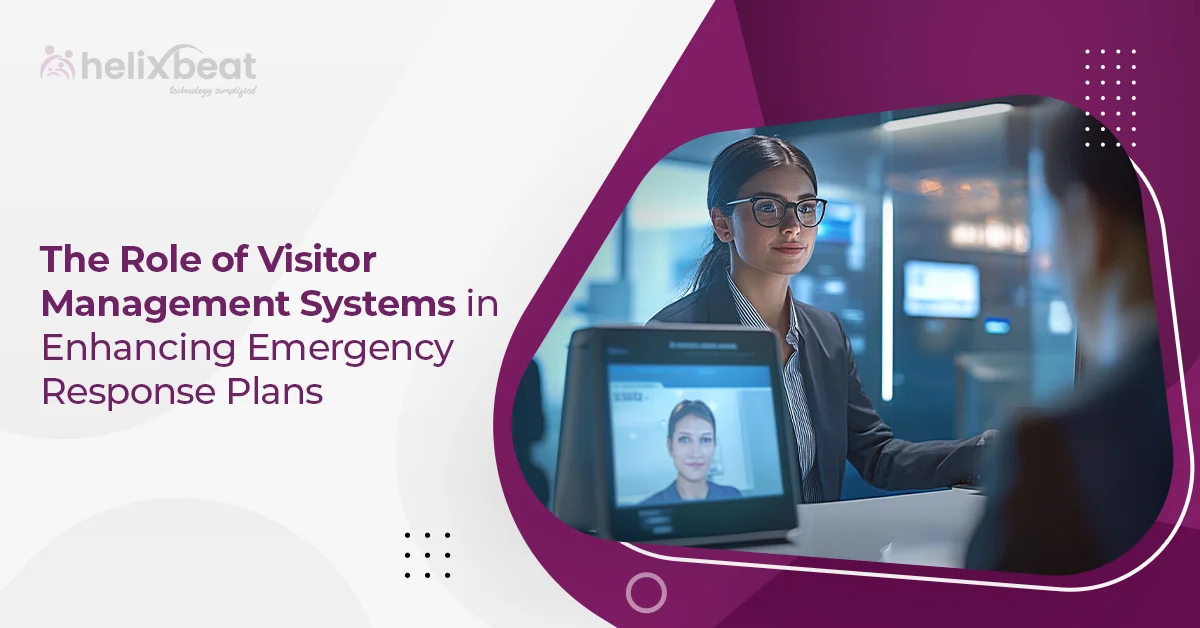Emergencies are unpredictable, but preparation isn’t. Whether it’s a fire, natural disaster, or security threat, every organization must have a robust emergency response plan in place. However, traditional methods of managing emergencies—such as paper logs and manual headcounts—often fall short in high-stress situations. That’s where Visitor Management Systems (VMS) come in. These systems streamline emergency preparedness by providing real-time data, automated alerts, and seamless integrations with security infrastructure.
In this blog, we’ll explore the critical role of visitor management systems in emergency response planning, common challenges organizations face, and how VISTA, a cutting-edge visitor management systems supports emergency response efforts.
Table of Contents
Understanding the Importance of Emergency Preparedness
Every year, workplaces around the world face emergency situations that put employees, visitors, and assets at risk. According to the National Fire Protection Association (NFPA), U.S. fire departments responded to approximately 3,340 office building fires annually between 2017 and 2021, causing an estimated $112 million in property damage. In such situations, a lack of real-time visitor data and communication breakdowns can make evacuations chaotic and dangerous.
Many organizations struggle with:
- Lack of real-time visibility on who is inside the building.
- Difficulty in alerting visitors and employees quickly.
- Ineffective tracking of people in crisis situations.
- Challenges in meeting compliance and safety regulations post-emergency.
By implementing a smart visitor management systems, businesses can eliminate these issues and enhance their ability to respond to emergencies effectively.
The Critical Role of Visitor Management systems in Emergency Preparedness
A Visitor Management Systems (VMS) does more than just register guests; it becomes a crucial tool in an organization’s emergency response strategy. A robust VMS helps in:
- Providing real-time visitor data for accurate evacuation procedures.
- Ensuring security teams are instantly alerted to emergencies.
- Tracking visitor movement in real-time to locate individuals in need of assistance.
- Integrating with security systems to automate emergency responses.
- Advanced Access Control
VISTA empowers organizations with robust access management, ensuring only authorized individuals can enter the premises. By issuing digital visitor credentials or badges, businesses can easily verify identities, reducing the risk of unauthorized access.
In emergency situations, this controlled access becomes even more critical, ensuring that only vetted individuals are present, thereby enhancing overall security and minimizing potential threats.
- Real-Time Monitoring & Visitor Accountability
VISTA offers real-time tracking capabilities, allowing security teams to monitor visitor and employee movements throughout the facility.
This data is invaluable during an emergency. It provides instant insights into the exact location of individuals, facilitating a swift and organized evacuation while ensuring no one is left behind.
- Instant Emergency Alerts & Notifications
Timely communication is essential in crisis situations, and VISTA enables organizations to send instant emergency alerts via SMS, email, and push notifications.
These alerts deliver clear evacuation instructions, helping maintain order and reducing panic, ensuring a safer and more efficient emergency response.
- Secure Data Management & Compliance
VISTA ensures that visitor and employee data is securely stored and accessible only to authorized personnel. This safeguards sensitive information while ensuring compliance with data protection regulations such as GDPR and HIPAA.

Case Study: A Manufacturing Facility Fire
In 2021, a fire broke out at a manufacturing facility in Texas. The fire alarm system worked, but the manual check-in system made it impossible to know exactly how many visitors were inside the plant at the time. Emergency responders struggled to verify if all visitors had been evacuated. This delay in accounting for people could have had devastating consequences. Had a Visitor Management Systems like VISTA been in place, a real-time evacuation list would have been instantly available, helping emergency teams act faster.
How to Design a Robust Emergency Preparedness Plan
A well-prepared workplace must have a structured emergency response plan. Here’s how visitor management can be integrated to enhance preparedness:
1. Risk Assessment & Planning
- Identify potential threats (fire, security breaches, health emergencies, etc.).
- Map out emergency exit routes and assembly points.
- Ensure visitor tracking is part of the plan.
2. Implementing a Visitor Management Systems
- Deploy a VMS to log visitor data, check-in/check-out times, and photo identification.
- Enable real-time visitor tracking and alerts.
- Integrate with access control and security systems.
3. Training & Drills
- Conduct emergency response training sessions for employees.
- Perform regular evacuation drills.
- Test VMS functionality in emergency scenarios.
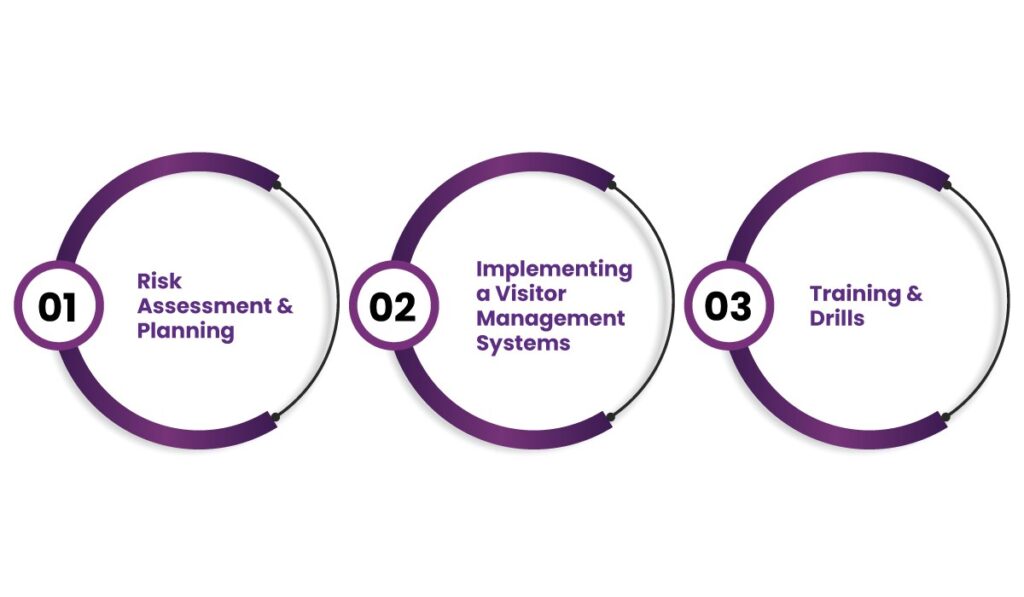
How VISTA Supports Emergency Response Plans
VISTA offers a suite of features that ensure a fast, efficient, and well-coordinated emergency response. Let’s look at how each feature contributes to safety:
1. Emergency Evacuation Management
VISTA ensures a swift and organized evacuation visitor management process with the following capabilities:
- Instant Evacuation List: During an emergency, VISTA generates an up-to-date evacuation list using real-time visitor and employee data. This helps security teams quickly determine who is present and needs to be accounted for.
- Identifying Missing Persons: By cross-referencing entry logs, VISTA helps security personnel identify anyone still inside the premises, reducing the chances of individuals being left behind.
- Digital Document Management: All critical emergency response documents, such as evacuation plans, fire drill records, and emergency contacts, are stored digitally and can be accessed immediately when needed.
- Photo Capturing for Identification: VISTA captures photos of visitors and employees upon check-in. In the event of an emergency, these images can assist responders in recognizing and locating missing persons efficiently.
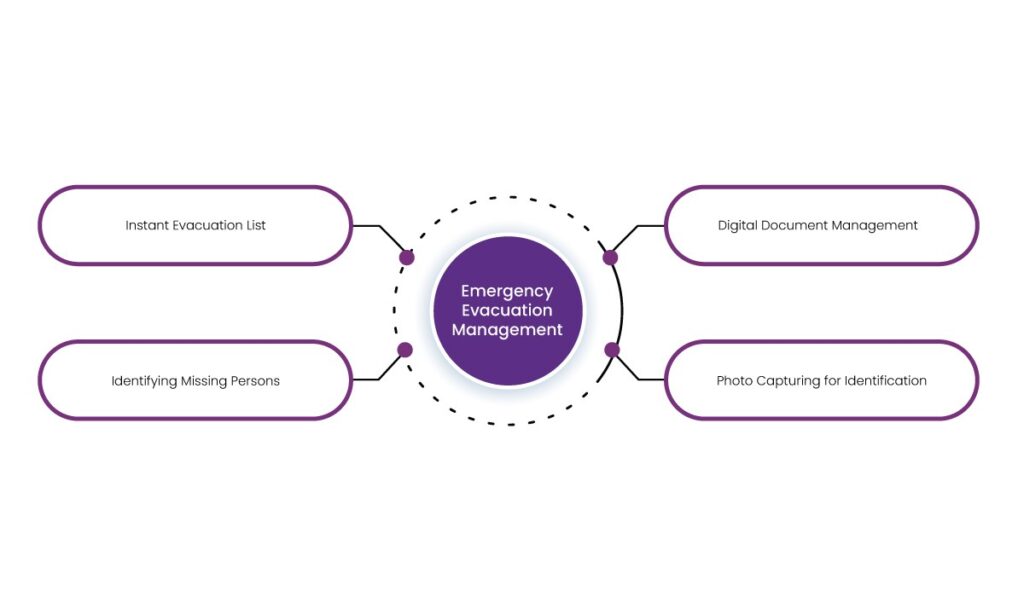
2. Real-Time Alerts & Notifications
Timely communication is key during emergencies, and VISTA provides:
- Automated Emergency Alerts: The system automatically notifies all visitors, employees, and security personnel when an emergency occurs.
- Multiple Communication Channels: Alerts are sent via push notifications, SMS, and emails to ensure everyone receives critical evacuation instructions regardless of their location.
- Minimizing Panic & Confusion: By providing clear, real-time updates, VISTA ensures that people receive precise guidance on where to go and what to do, reducing the risk of chaos.
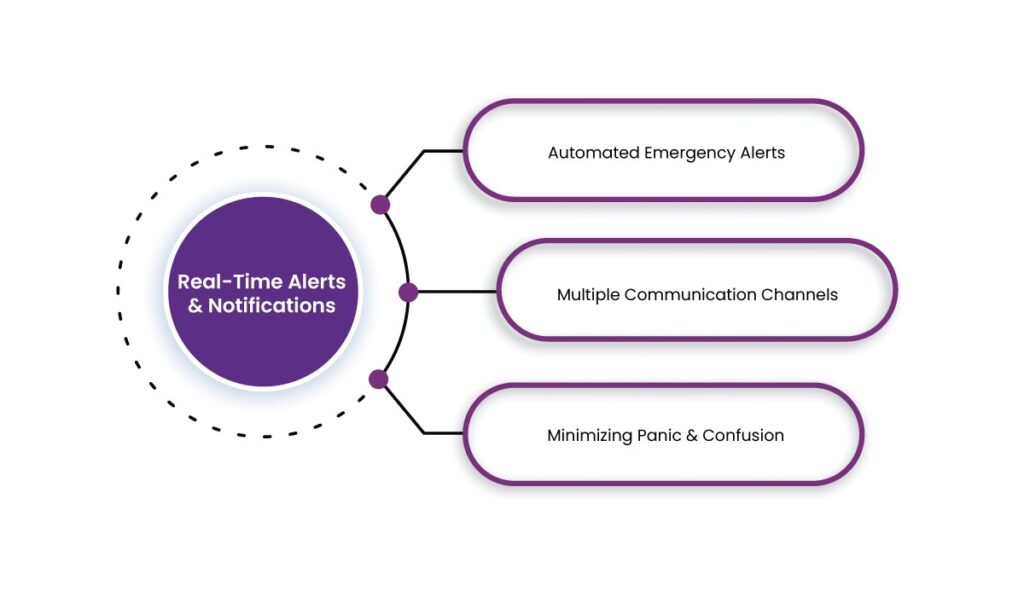
3. Role-Based Access for Crisis Management
In emergencies, restricting or granting access to specific areas is crucial. VISTA visitor management process offers:
- Controlled Access Permissions: Security teams and administrators can lock or unlock doors to restrict movement in hazardous areas or allow access to emergency exits.
- Preventing Unauthorized Movement: By limiting access to only authorized personnel, VISTA visitor management process ensures a safe and orderly evacuation while preventing security risks such as theft or unauthorized re-entry.
- Crisis Management Authority: Designated personnel can take control of crisis management, ensuring a coordinated response effort with clear leadership.
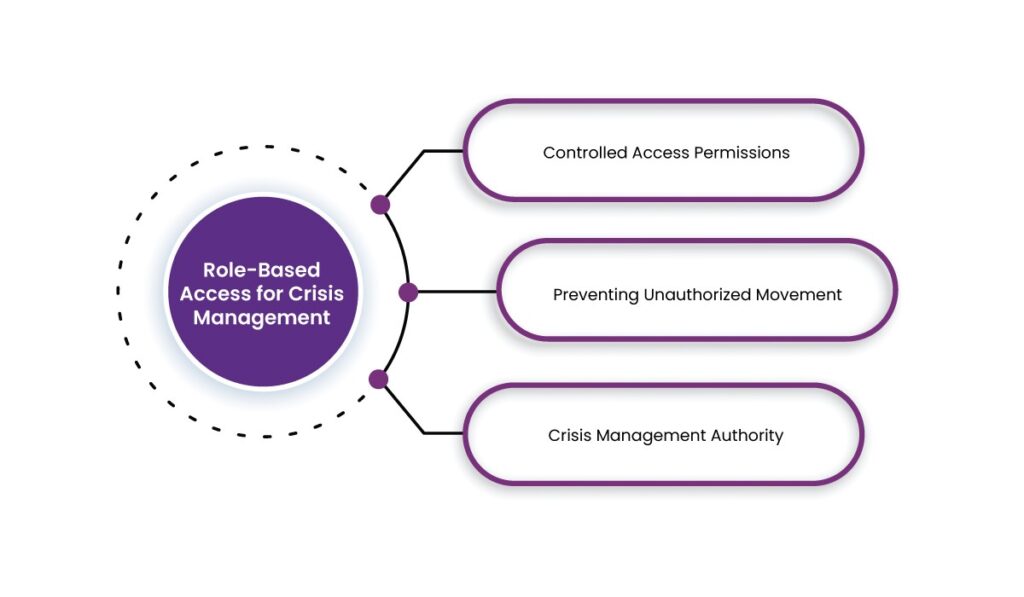
4. Visitor Tracking for Accountability
Post-evacuation tracking is crucial for confirming everyone’s safety. VISTA visitor management process supports:
- Real-Time Tracking: The system continuously monitors the movements of visitors and employees, ensuring an accurate headcount after an evacuation.
- Locating Individuals in Need of Assistance: If someone is unaccounted for, security teams can use VISTA’s tracking data to pinpoint their last known location, helping emergency responders act quickly.
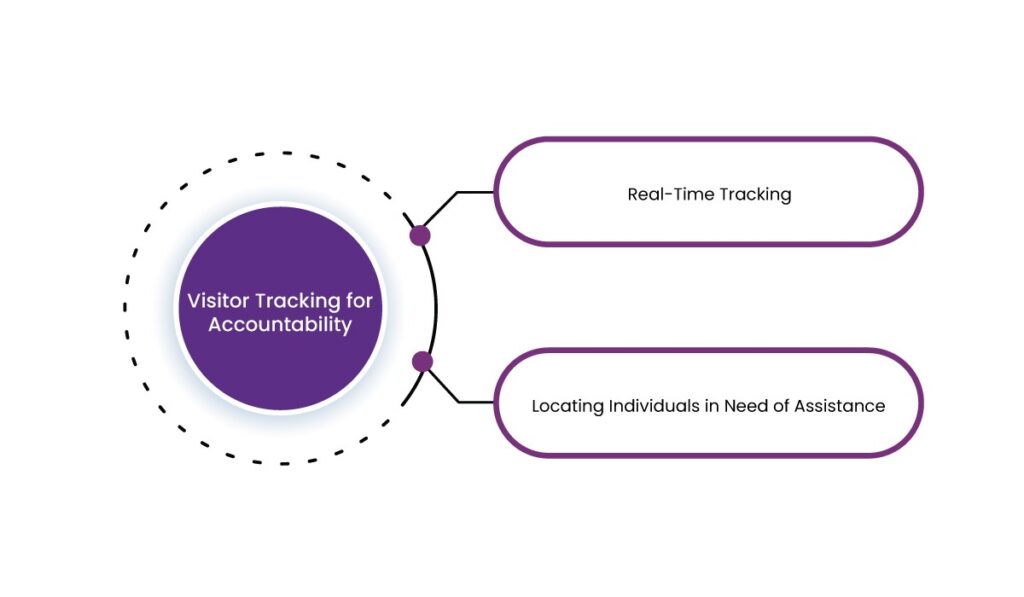
5. Quick Integration with Security Systems
VISTA’s visitor management process seamlessly connects with existing security infrastructure, enhancing emergency responses through:
- CCTV & Fire Alarm Integration: The system works with security cameras and fire alarms to trigger automatic responses, such as unlocking exit doors or sending alerts.
- Access Control System Coordination: VISTA visitor management process can sync with building access systems to ensure a smooth and secure evacuation process.
- Faster Emergency Response: By integrating with pre-established safety protocols, VISTA significantly reduces response times, ensuring swift action during emergencies.
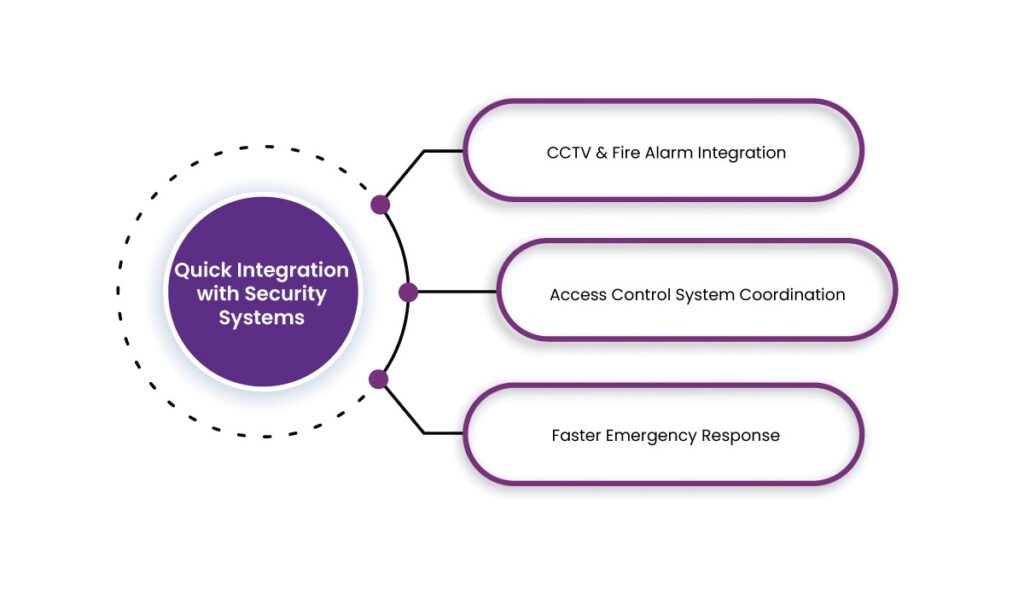
By incorporating these features, VISTA strengthens emergency preparedness, ensuring a safe and well-managed response to any crisis.
Case Study: Office Tower Evacuation Success
In 2023, a 30-story commercial office building in New York had to be evacuated due to a gas leak. Thanks to their visitor management systems, security teams could instantly generate an evacuation report and confirm that everyone had exited the building. This rapid response prevented injuries and ensured compliance with fire safety regulations.
6. Compliance & Post-Emergency Reporting
- Logs all emergency incidents for compliance with OSHA and other safety regulations.
- Generates reports for audits, helping businesses improve future emergency response plans.
- Provides insights into emergency trends, helping organizations refine their procedures.
Case Study: Compliance Violation in a Hospital
In 2019, a hospital in Chicago was fined for not having accurate visitor records during a fire drill audit. Had they been using VISTA’s automated visitor tracking and reporting, compliance would have been seamless, preventing hefty penalties.
Conclusion
Emergencies demand fast, coordinated, and data-driven responses. Traditional paper logs and manual check-ins cannot provide real-time visitor tracking, automated alerts, or seamless security integration. By adopting a Visitor Management Systems like VISTA, businesses can enhance their emergency preparedness, improve compliance, and most importantly, save lives.
If your workplace lacks a visitor management system, it’s time to rethink your emergency response plan.
Book a free demo with VISTA visitor management systems today and take the first step toward a safer, more secure workplace.
Frequently asked question
What is a Visitor Management System (VMS), and why is it important?
- A VMS is a solution that tracks and manages visitors entering a facility, enhancing security and operational efficiency.
How does a VMS improve security in an organization?
- By monitoring and controlling visitor access, a VMS helps prevent unauthorized entry and ensures that only authorized individuals are on the premises.
What features should I look for in a VMS?
- Key features include real-time tracking, instant notifications, data security compliance, and integration with existing security systems.
Can a VMS integrate with existing security systems?
- Yes, many VMS solutions can integrate with systems like CCTV, access control, and fire alarms to provide a comprehensive security approach.
How does a VMS handle data privacy and compliance?
- A robust VMS securely stores visitor data, ensuring compliance with regulations such as GDPR or HIPAA, and restricts access to authorized personnel.
What are the benefits of real-time visitor tracking?
- Real-time tracking allows organizations to monitor visitor movements, aiding in efficient evacuations and ensuring no one is left behind during emergencies.
How can a VMS assist during emergency situations?
- A VMS can send instant emergency alerts to visitors and employees, provide evacuation instructions, and help account for all individuals on-site.
Is implementing a VMS cost-effective for small businesses?
- While there is an initial investment, a VMS can enhance security, improve operational efficiency, and ensure compliance, making it a worthwhile consideration for businesses of all sizes.



